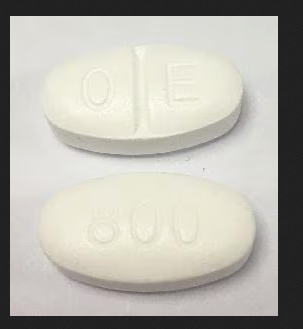Is Gabapentin OK for Children ?
Gabapentin is a prescription medication commonly used to treat nerve pain and seizures. Originally developed to treat epilepsy, it’s also prescribed to manage neuropathic pain (pain due to nerve damage), especially in conditions like diabetic neuropathy, shingles (postherpetic neuralgia), and fibromyalgia. Additionally, it’s used to manage restless legs syndrome and sometimes prescribed off-label for anxiety disorders.

Here’s a quick breakdown of how it works and its usage:
- Mechanism of Action: Gabapentin is structurally similar to GABA (gamma-aminobutyric acid), a neurotransmitter that helps calm nerve activity in the brain. While its exact mechanism isn’t fully understood, gabapentin interacts with certain calcium channels in the brain and spinal cord, which can reduce the sensation of pain and control abnormal electrical activity, like seizures.
- Forms: Gabapentin is available in capsules, tablets, and oral solutions, with brand names like Neurontin and Gralise.
- Dosage: Dosage varies significantly based on what it’s being used for. It may be taken up to three times daily, and the dosage is often gradually increased to reduce side effects.
- Common Side Effects: These may include dizziness, drowsiness, fatigue, and coordination problems. Some people also experience mood changes, blurred vision, or difficulty speaking.
- Warnings: Gabapentin can interact with other medications and should be used cautiously with alcohol or sedatives, as it may increase drowsiness and risk of overdose. Stopping gabapentin suddenly can lead to withdrawal symptoms, so it should be tapered under a doctor’s guidance.
Since gabapentin has a wide range of effects, its benefits and risks are best managed under a healthcare provider’s supervision.
Gabapentin can be prescribed to children for specific medical conditions, but its use in pediatric patients depends on the age of the child, the condition being treated, and the guidance of a healthcare provider. Here’s an overview:
Approved Uses of Gabapentin for Children
- Epilepsy (Seizure Disorders):
- Gabapentin is FDA-approved for treating partial seizures in children ages 3 and older. It can be used as an add-on therapy in children who may need additional control for their seizures.
- Nerve Pain (Neuropathic Pain):
- Gabapentin is commonly used in adults for nerve pain, but it is sometimes prescribed off-label in children for specific types of neuropathic pain, although this is less common.
Safety and Dosage Considerations
- Dosage: The dosage for children is typically based on their age, weight, and the specific condition being treated. Children’s doses are usually lower and adjusted carefully.
- Side Effects: Gabapentin’s side effects in children may include drowsiness, dizziness, fatigue, and behavioral changes. Some children may also experience mood changes or increased agitation.
- Monitoring: When gabapentin is prescribed to children, close monitoring by a healthcare provider is essential to watch for any side effects, especially since children may be more sensitive to the medication.
Risks and Precautions
- Mood and Behavioral Changes: Children may be more prone to behavioral side effects, such as increased agitation, irritability, or mood swings.
- Cognitive and Physical Development: Long-term effects are not fully understood, so gabapentin is usually prescribed with caution.
- Off-Label Uses: For conditions outside of epilepsy, gabapentin may be used off-label but requires careful evaluation and monitoring by a pediatric specialist.
Key Takeaways
- Gabapentin can be used in children aged 3 and older for certain seizure disorders under a doctor’s supervision.
- It’s important to have the child regularly monitored by a healthcare provider to ensure safety and manage side effects.
- If gabapentin is considered for a condition other than epilepsy, a thorough discussion with a pediatrician or pediatric neurologist is recommended to weigh the potential benefits and risks.